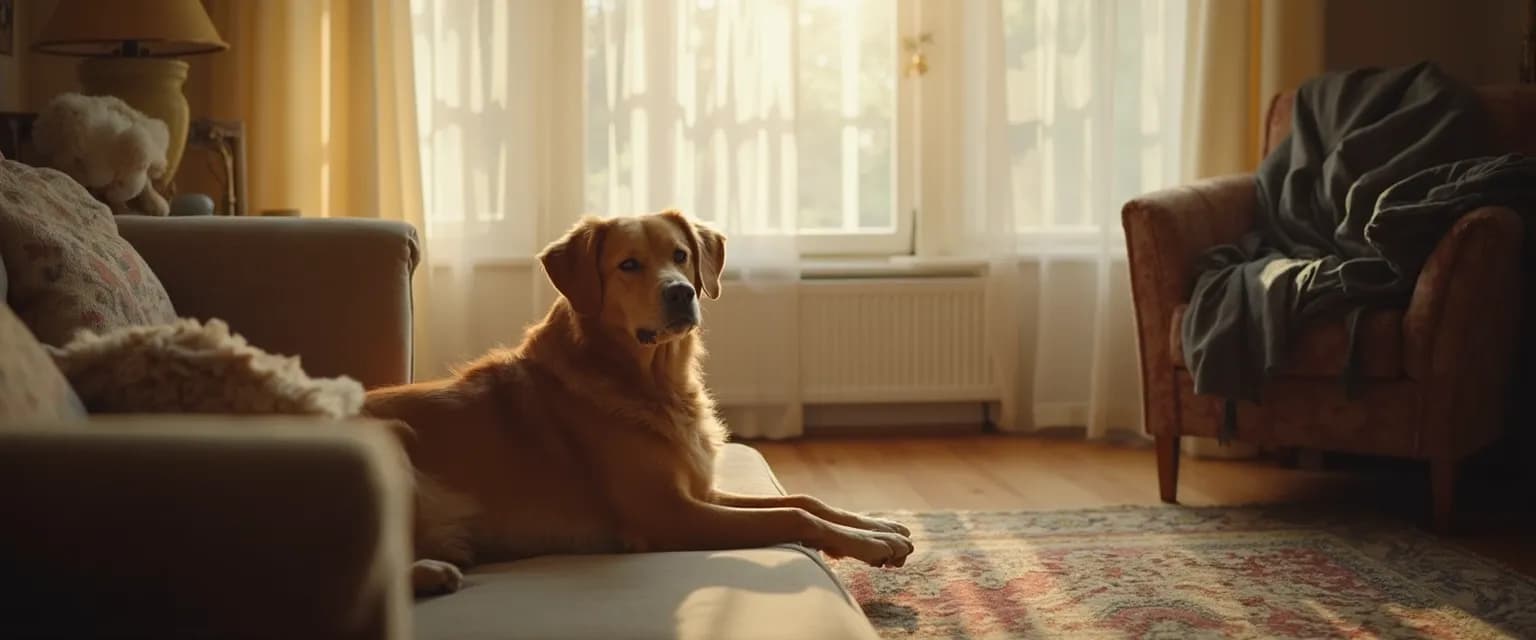How to Help Your Dog Overcome Separation Anxiety: A Trainer's Approach
Ever watched your furry friend transform into a destructive tornado the moment you reach for your car keys? You're not alone. Separation anxiety affects up to 14% of dogs, turning peaceful homes into stress zones for both pets and their humans. Those guilt-inducing whines, destroyed furniture, and worried neighbors complaining about barking are all signs your dog is struggling when you're not there. The good news? With the right separation anxiety strategies, you can help your pup feel secure even when you're away.
As someone who's guided countless pet parents through this challenge, I've seen how separation anxiety creates a cycle of stress that affects your entire household. Your dog isn't trying to punish you—they're genuinely distressed. The panicked panting, desperate attempts to escape, and those sad puppy eyes are all signals that your dog needs help developing confidence when alone. Let's explore how to break this cycle with techniques that actually work.
Think of addressing separation anxiety like teaching your dog a new language—the language of feeling safe. With consistency, patience, and the right approach, you'll both be happier and more relaxed. Ready to transform those tearful goodbyes into confident see-you-laters?
Understanding Your Dog's Separation Anxiety Triggers
Before diving into solutions, let's decode what's actually happening when separation anxiety kicks in. Your dog has learned to associate certain cues—grabbing your keys, putting on shoes, or even checking your phone—with your departure. These seemingly innocent actions become anxiety alarms for your pup.
Pay attention to when your dog starts showing stress signals. Does the anxiety begin when you're preparing to leave or only after you've gone? True separation anxiety differs from boredom-based behaviors or incomplete house training. With genuine separation anxiety, the distress begins before you've even left and centers specifically around your absence.
Interestingly, our own behavior often unintentionally reinforces separation anxiety. Those long, emotional goodbyes? They signal to your dog that leaving is indeed a big, scary deal. The excited, high-energy greetings when you return? They confirm that reunions are extremely significant events, making separations seem more dramatic by comparison.
Many owners mistake punishment for training, which only increases anxiety. Instead, focus on understanding anxiety triggers and creating new, positive associations with alone time.
Effective Training Techniques for Separation Anxiety
The most successful approach to separation anxiety combines desensitization with counter-conditioning. This isn't about quick fixes but building lasting confidence through small, successful steps.
Start with departure cue desensitization. Pick up your keys and sit on the couch. Put on your shoes and watch TV. This teaches your dog that these actions don't always mean you're leaving. Practice these "fake departures" until they no longer trigger anxiety.
Next, implement gradual alone-time training. Begin with absences so brief your dog doesn't become anxious—perhaps just stepping outside for 10 seconds. Return before any distress begins. Gradually extend this time as your dog builds tolerance, always staying under their anxiety threshold.
Counter-conditioning changes how your dog feels about being alone by creating positive associations. Try these approaches:
- Leave a special treat-dispensing toy that's only available when you're gone
- Create a comfortable "safe space" with your scent on a blanket or clothing item
- Use calming music or white noise to mask outside sounds
Consistency is crucial. Brief, successful training sessions several times daily are more effective than longer, less frequent ones. This methodical approach helps your dog develop confidence building skills that transfer to longer periods alone.
Creating a Separation Anxiety Management Plan That Works
Beyond training, environmental modifications significantly reduce separation anxiety. Consider these practical adjustments to your home setup:
Create a departure-proof zone where your dog feels secure. This might be a specific room, a crate (if they're properly crate-trained), or an area with a baby gate. Stock it with comfort items and appropriate toys. Some dogs feel safer in smaller, den-like spaces rather than having free run of the house.
Maintain a consistent routine that helps your dog predict what happens next. Dogs thrive on predictability, which builds security. Exercise your dog before departures—a tired dog has less energy for anxiety. Just ensure the activity ends 30 minutes before you leave so they're calm when you go.
For more challenging cases, explore anxiety management tools like calming pheromone diffusers, anxiety wraps, or background noise machines. Remember that separation anxiety requires a comprehensive approach—there's no single magic solution.
With patience and these structured separation anxiety techniques, most dogs show significant improvement within weeks. The key is consistency and celebrating small victories along the way. Your commitment to helping your dog overcome separation anxiety not only improves their quality of life but strengthens your bond through mutual trust and understanding.




